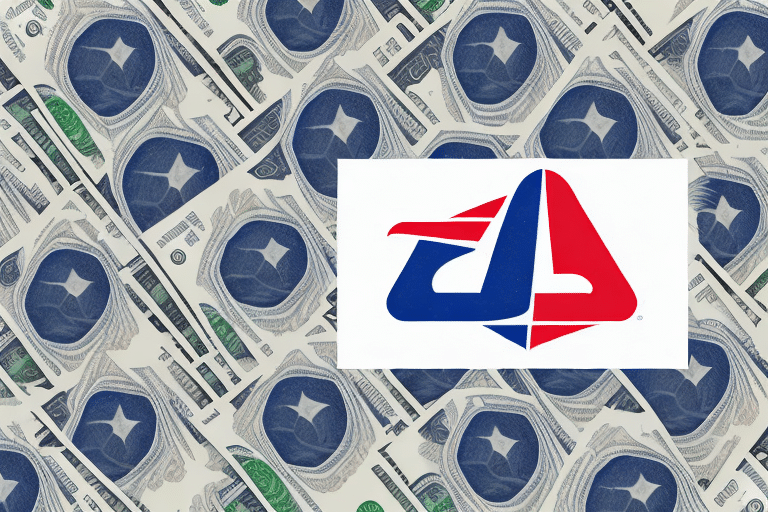How Much Does USPS Insurance Cost Per $100?
If you are shipping valuable items through the United States Postal Service (USPS), it is recommended to purchase insurance to protect your package. USPS insurance offers an affordable option for those seeking peace of mind when shipping valuable items. This article explores USPS insurance, including its cost, coverage options, and the claims process.
Understanding the Basics of USPS Insurance
USPS insurance is a protection plan that provides coverage for lost, damaged, or stolen packages during transit. The cost is based on the declared value of the item being shipped. For example, if the declared value of an item is $500, the insurance cost for that package will be higher than if the declared value is only $100.
USPS offers insurance for both domestic and international shipments, with competitive rates compared to other major shipping carriers. Coverage amounts start at $100 and go up to $5,000 for domestic shipments. For international shipments, the coverage amount varies depending on the destination country.
It's important to note that USPS insurance covers only the value of the item being shipped, excluding any sentimental or emotional value. Additionally, certain items such as perishable goods, live animals, and hazardous materials are not eligible for USPS insurance coverage.
USPS also offers additional services like signature confirmation and adult signature required for an extra fee. These services provide added security and peace of mind for high-value or sensitive shipments.
Benefits of USPS Insurance for Your Packages
- Peace of Mind: Know your package is protected against loss or damage.
- Financial Protection: Save money in case of damage or loss, as insurance covers the declared value.
- Hassle-Free Claims: Easily file claims online or at your local post office with a straightforward process.
With USPS insurance, you can rest assured that your package is covered in case of any mishap during transit.
According to the [USPS Service Guide](https://pe.usps.com/text/imm/immc1_011.htm), the claims process is efficient, allowing you to track the status of your claim online.
How USPS Insurance Works to Protect Your Shipments
USPS insurance covers your shipments in case of theft, damage, or loss during transit. The insurance covers the declared value of the package, and you can file a claim to receive a refund if something goes wrong. The claim process is straightforward, requiring proof of the item's value and evidence that it was lost or damaged while in transit.
However, USPS insurance has certain limitations and exclusions. It does not cover items prohibited or restricted by law, such as hazardous materials or illegal substances. Additionally, some items, like jewelry or collectibles, may have limited coverage. Always check the [USPS Prohibited Items List](https://www.usps.com/shipper/inside-prohibited-items.htm) and understand the insurance coverage limitations before shipping your items.
Types of USPS Insurance Coverage Available
USPS offers various types of insurance coverage tailored to different mailing services:
- Priority Mail Express: Up to $100,000 for documents and $50,000 for merchandise.
- Priority Mail: Up to $50,000 in coverage.
- First-Class Mail and USPS Retail Ground: Up to $5,000 in coverage.
Note that certain items, such as perishable goods and hazardous materials, may not be eligible for insurance coverage. For detailed information, refer to the [USPS Insurance Options](https://www.usps.com/ship/insurance.htm).
Factors Influencing the Cost of USPS Insurance
Several factors determine the cost of USPS insurance:
- Declared Value: Higher declared values result in higher insurance costs.
- Mail Service Type: Different services (e.g., Priority Mail, First-Class Mail) have varying insurance rates.
- Package Size and Weight: Larger and heavier packages may require more insurance coverage, increasing the cost.
- Item Type: High-value items like jewelry or electronics may incur higher insurance premiums.
USPS insurance is optional but provides significant financial protection and peace of mind. Customers can purchase insurance at the time of mailing or online through the [USPS Insurance Portal](https://www.usps.com/ship/insurance.htm).
Comparing USPS Insurance with Private Shipping Insurances
While USPS insurance is affordable, private shipping insurance options are also available, often at a higher cost but with additional benefits:
- Higher Coverage Amounts: Private insurers may offer coverage beyond USPS limits, such as up to $100,000 for domestic shipments.
- Flexible Coverage Options: More tailored insurance plans to suit specific needs.
- Comprehensive Coverage: Some private insurances cover a broader range of scenarios, including accidental damage.
Choosing between USPS insurance and private shipping insurance depends on your needs and budget. For high-value items, private insurance might offer more comprehensive protection. Compare options using resources like the [Consumer Reports Shipping Comparison](https://www.consumerreports.org/ships-services/compare-shipping-options-a6563388591/).
Purchasing USPS Insurance for Your Package
You can purchase USPS insurance through the following methods:
- Online: Visit the [USPS website](https://www.usps.com/ship/insurance.htm), enter package details, and add insurance to your shipping label.
- Post Office: Request insurance at your local post office by filling out the necessary forms and paying the premium.
Ensure that the declared value accurately reflects the worth of your items. If your package exceeds the maximum coverage amount, consider purchasing additional insurance or using a different shipping carrier.
Filing a Claim for Lost or Damaged Shipments with USPS Insurance
If your shipment is lost or damaged during transit, follow these steps to file a claim:
- Gather Documentation: Collect proof of the item's value, receipts, and tracking information.
- Complete a Claim Form: Visit the [USPS Claims Center](https://www.usps.com/help/claims.htm) to fill out the necessary forms online or obtain one at your local post office.
- Submit Evidence: Provide evidence of loss or damage, such as photos or inspection reports.
USPS must receive your claim within specific timeframes: within 60 days for damaged shipments and within 6 months for lost shipments. [Learn more about the claims process](https://faq.usps.com/s/article/File-a-Claim).
Tips to Avoid Rejection of Your USPS Insurance Claim
- Accurate Information: Ensure that all information about the package's value and condition is correct.
- Proper Packaging: Use sturdy packaging to prevent damage during transit.
- Timely Claims: File your claim within the required time limits to avoid rejection.
- Keep Documentation: Retain all receipts, tracking information, and packaging materials until the claim is resolved.
By following these tips, you can increase the likelihood of your claim being approved.
USPS Insurance for International Shipments
Yes, USPS insurance covers international shipments, but the coverage amounts and costs vary based on the destination country and the value of the item being shipped. It's recommended to check the [USPS International Insurance Options](https://www.usps.com/international/insurance.htm) for detailed information and to ensure your package meets all eligibility requirements.
Keep in mind that international shipments may be subject to additional customs regulations and import restrictions, which can affect insurance coverage.
Conclusion
USPS insurance is an affordable and reliable option for protecting your packages during transit. With a range of coverage options and an easy claims process, it provides peace of mind for anyone shipping valuable items. Whether you're sending domestically or internationally, understanding the nuances of USPS insurance can help you make informed decisions to safeguard your shipments.






















